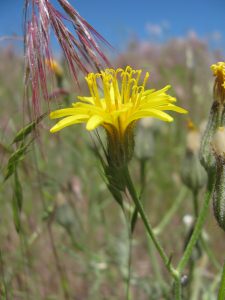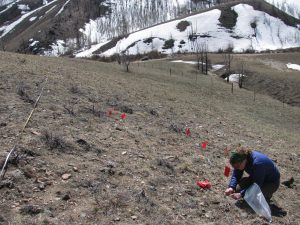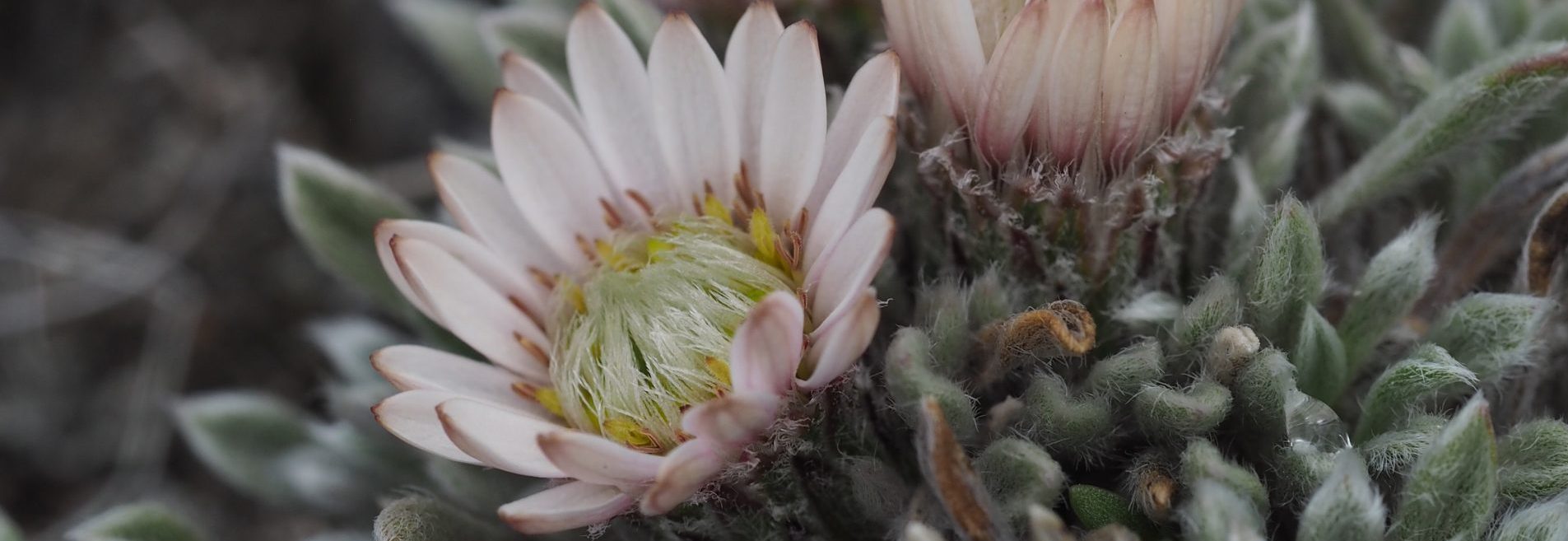Learning about evolution helped me make sense of the patterns I saw in nature. The world did not appear chaotic to me, and evolution supplied a rigorous, elegant, and satisfying model that explained the order that is common (but not universal) in nature. Just as some scientists are drawn to fishes, orchids, or spiders, I was drawn to species. What are they? How do they form? What leads to their success and spread? I’ve worked on hybrids, polyploids and species that reproduce asexually, but I’ve not entered the species debate until now (except for a small piece[1]). Almost 30 years after I finished my Ph.D., I still had to be convinced that I had something that might be worth saying. Because I’ve been nervous about having this paper out there, I wanted to write down some thoughts about how this work came to be, things that slowed it (me) down, and what it’s like to struggle to find one’s voice.

My journey to this paper is long, going back to my first research experience as an undergraduate summer researcher (shoutout to NSERC USRA!) at McGill, working on a species complex in the genus Packera (in the sunflower family). The basic question I was given was: Does this complex include one or more species? I measured morphology, compared flavonoid profiles (I’m that old…) and went out to the astonishingly beautiful Gaspé Peninsula for a glorious week of fieldwork in the Chic-Choc Mountains to see plants in the wild, collect seeds and leaf tissue of Packera cymbalaria. Hypotheses for the persistence of the Chic-Choc populations of this little Packera, thousands of kilometres away from close relatives in the mountains of southern Alberta and the Yukon, is that they survived Pleistocene glaciation in unglaciated areas in the East, and now persist only on steep southeast-facing cliffs. As I sat precariously perched on cliffs making collections, after the most treacherous hikes I’d ever done, I felt privileged to be in the presence of these mighty little survivors.
On that trip, I remember asking my supervisor[2] how it was remotely possible for plants in Quebec to be part of the same species as populations they had been separated from for millennia. The fact that he didn’t offer an easy answer or dismiss my question is a lesson I still think about. I was hooked – I am still hooked – on this question: What does it mean when we call something a species? What is it that holds populations together or propels them apart, and can we say for sure whether they are in fact one or more species?
For most of my career, I’ve worked on agamic complexes, groups in which asexual reproduction (apomixis), polyploidy and hybridization create a lovely storm, repeatedly bringing together (through hybridization) and isolating populations (through asexuality and polyploidy). The complex tangles that ensue have been held up as examples by those who’ve argued that plants  don’t always make good biological species (which isn’t broadly true), and by those who argue that these groups are oddball exceptions to otherwise ‘good’ concepts of species[3]. In any case, they are perhaps not the best groups to study if you hope to infiltrate speciation biology, with its inclination toward the study of diploid, sexually-reproducing outcrossers more or less well-integrated by gene flow, and that are at least partially isolated from their close relatives by intrinsic isolating barriers. As much as I admire and align with speciation research, the field tends to focus on a rather narrow slice of biodiversity. Maybe this is changing. Over the years, my students and I have documented transitions in ploidy and reproductive system, and looked at patterns of hybridization, barriers to interbreeding, causes of range limits, and patterns of co-occurrence. While most of this work could be seen as speciation research, we generally haven’t framed it as such. I don’t know why, but somehow speciation biology has seemed unattainable as a home for this work[4].
don’t always make good biological species (which isn’t broadly true), and by those who argue that these groups are oddball exceptions to otherwise ‘good’ concepts of species[3]. In any case, they are perhaps not the best groups to study if you hope to infiltrate speciation biology, with its inclination toward the study of diploid, sexually-reproducing outcrossers more or less well-integrated by gene flow, and that are at least partially isolated from their close relatives by intrinsic isolating barriers. As much as I admire and align with speciation research, the field tends to focus on a rather narrow slice of biodiversity. Maybe this is changing. Over the years, my students and I have documented transitions in ploidy and reproductive system, and looked at patterns of hybridization, barriers to interbreeding, causes of range limits, and patterns of co-occurrence. While most of this work could be seen as speciation research, we generally haven’t framed it as such. I don’t know why, but somehow speciation biology has seemed unattainable as a home for this work[4].
I’ve also mostly treated my questions about species concepts as a pastime, not even a real sideline to my main research pursuit. I figured that like most evolutionary biologists, I was free to think about the nature of species, but writing about it was for that special cadre of biologist-philosophers. After all, most of us stick to our empirical work and leave the philosophizing to the philosophers… except when we teach. I teach Fundamentals of Evolution, which includes a lecture on species concepts. When I give that lecture, of course, I include my perspective on species. My lecture reflects the time I’ve spent observing and thinking about species in nature. In that sense, I am not a philosopher… even more reason for steering clear of formally working on species concepts.
When Wayne approached me in 2016 about jointly accepting an invitation to contribute to a species concept symposium, I was intrigued but hesitant. As a trusted colleague and my co-instructor in Evolution, he’d had a chance to hear what I teach about species, which made it easier for me to believe I/ we would have something useful to contribute. We met and hashed out a plan for a co-authored talk, which we gave together at the 2017 conference. We then tried to finish up our manuscript for a symposium collection, but we weren’t happy with what we had written by the deadline. It seemed unfinished and unsatisfying, in part because we had yet to figure out how to bring our perspectives together, and in part because we still hadn’t dealt with some of the messes in the corners of our ideas. Wayne’s perspective emerges from his work on coalescence, on species-level taxonomy, and on phylogenetics (not to speak for him). Mine comes more from the biosystematics tradition, population biology, and speciation research. We met for long discussion sessions; we went away and read more, thought more, and then discussed more.
As we worked over the last seven (!!!) years on this sometimes-accursed paper, we tried to force ourselves to grapple with ugly, beautiful messes – difficult tangles that we didn’t know what to do with, like what’s the difference between a locally adapted population and a species? and why shouldn’t reproductive isolation and phylogenetic history come together over time? We wanted to write a paper about species that was motivated by the species that we know and the processes that we understand, even though our knowledge of species and evolutionary process is far from complete. In a sense, we wanted to try to face everything we don’t know about species and put it into a manuscript that, while not called ‘Everything we don’t know about species’, is guided both by what we don’t understand and by what we think we know. We figured out that if species are entities in nature, then the challenge is not to battle about which perspective gains supremacy but to reflect on how these perspectives measure up against what we observe in the natural world. Wayne led the writing (which will be obvious to anyone who knows his voice), but we grappled together. There were many drafts… so many drafts, but in the end, we’re quite proud of the paper we’ve produced. I hope readers will find some value in it. I know I learned a lot through this work, and not just about species.
I learned that looking to nature is more comfortable for me than starting with philosophical ideas or trying to fit nature into existing concepts of species. I learned that this is valid – I say this with some trepidation because in truth, it’s always been hard to believe that my way is an OK way. So yes, besides the things I learned about species, I also learned some things about the self-imposed gatekeeping that limits how we feel we can participate in science. As a first-generation university student, and as a bit of a square peg within my family of upbringing, I am prone to the self-doubt and sense of illegitimacy that come from feeling like I’m occupying spaces I have no business being in. I know I’m not alone in this, but you might think a person would grow out of this over XX decades. But it’s hard to fully let go of our pasts (and also, we probably shouldn’t). If this paper is well-received, and maybe even if it isn’t, it hopefully will encourage me, and maybe at least one other person to trust in the legitimacy of their own ideas and perspectives. We don’t talk (enough) about the things we thought but didn’t say, the ideas we hesitated to pursue or the papers we didn’t write or haven’t had the confidence to finish. But as I sit here closer to the end of my career than to its start, I’m still learning to stop wondering whether my ideas merit being written down and put out alongside everyone else’s. Maybe our contributions to science, like species in nature, don’t have to conform to predefined notions about what makes them legitimate.
ideas or trying to fit nature into existing concepts of species. I learned that this is valid – I say this with some trepidation because in truth, it’s always been hard to believe that my way is an OK way. So yes, besides the things I learned about species, I also learned some things about the self-imposed gatekeeping that limits how we feel we can participate in science. As a first-generation university student, and as a bit of a square peg within my family of upbringing, I am prone to the self-doubt and sense of illegitimacy that come from feeling like I’m occupying spaces I have no business being in. I know I’m not alone in this, but you might think a person would grow out of this over XX decades. But it’s hard to fully let go of our pasts (and also, we probably shouldn’t). If this paper is well-received, and maybe even if it isn’t, it hopefully will encourage me, and maybe at least one other person to trust in the legitimacy of their own ideas and perspectives. We don’t talk (enough) about the things we thought but didn’t say, the ideas we hesitated to pursue or the papers we didn’t write or haven’t had the confidence to finish. But as I sit here closer to the end of my career than to its start, I’m still learning to stop wondering whether my ideas merit being written down and put out alongside everyone else’s. Maybe our contributions to science, like species in nature, don’t have to conform to predefined notions about what makes them legitimate.
[1] Rundle et al. 2002 Note that the perspective in that paper is somewhat at odds with what we present in Maddison and Whitton (2023), though they are united in their focus on reflecting what happens in nature.
[2] John Bain, who more than anyone helped me find my path.
[3] This includes Ernst Mayr in his 1992 paper analyzing the flora of Concord Massachusetts, in which he includes apomicts among the mere 6% of the flora that is truly problematic from the perspective of the BSC, adding “as in all cases of asexual reproduction, the application of the BSC is inappropriate, anyway”.
